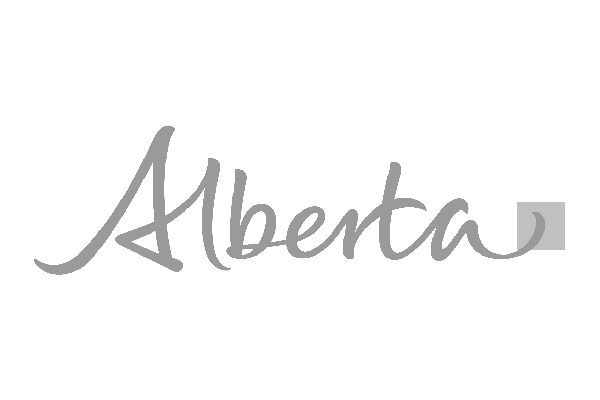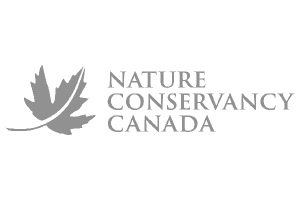The Ecological Role of Beavers in Alberta's Wetlands
Summary of research in Alberta examining the role of beavers in influencing hydrology, biodiversity, and landscape connectivity.
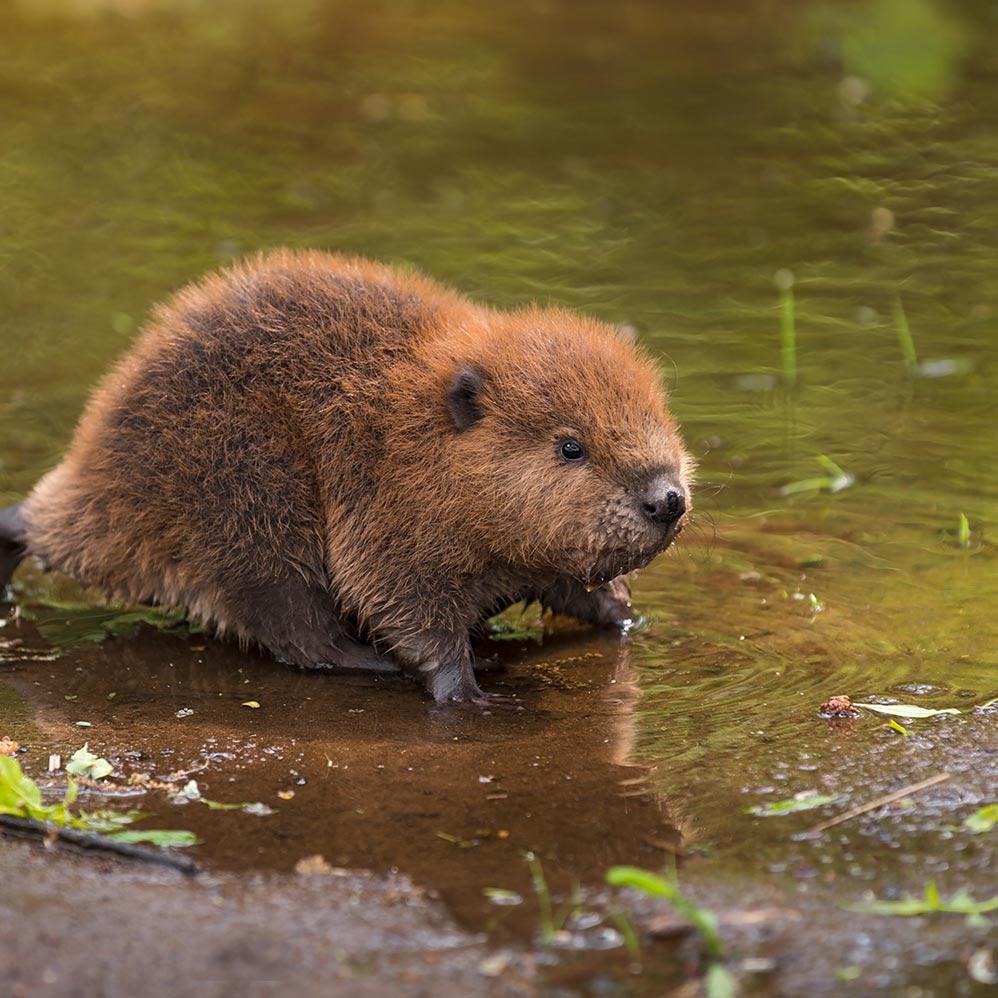

In this section, we highlight research by Dr. Glynnis Hood (Professor Emerita at the University of Alberta) and her collaborators on the vital role of beavers in Alberta's wetlands, exploring how they impact hydrology, biodiversity, and wetland connectivity.
Introduction
The North American beaver is a semi-aquatic rodent found in aquatic ecosystems throughout Alberta, except in high-elevation Rocky Mountain areas and the driest parts of the Grassland Natural Region.
-
Water management: Beaver dams slow water flow, reduce erosion, and support groundwater recharge, enhancing water storage and helping maintain water levels[2].
-
Habitat creation and biodiversity enhancement: Through their building activities, beavers create diverse wetland habitats that support a wide range of species and enhance biodiversity in these ecologically rich ecosystems[3,5].
-
Climate change effects mitigation: Beavers help mitigate climate-driven events like floods, droughts, and fires by building dams that store water in the landscape, reducing flood intensity and sustaining water during droughts[1].

Trapped to near extinction for their pelts by the late 1800s, beavers have since recovered.

Beavers chew on trees to gather food and building materials, while also keeping their teeth sharp.
This section highlights key research findings by Dr. Glynnis Hood and her collaborators on the ecological role of beavers in Alberta.
spotlight: Ecosystem engineers
Beavers are known as ecosystem engineers.
- Beavers are widely recognized as “ecosystem engineers” for their ability to transform landscapes to meet their own needs—changes that also benefit many other species[2]. By building dams, lodges, and canals, they alter water flow, habitat structure, and nutrient dynamics—increasing water retention and storage, biodiversity, and ecosystem connectivity[1,2,3,5,6].
- Beavers construct dams by felling trees and gathering branches, mud, and stones. These materials are strategically placed to block streams, slow water flow, and raise water levels, resulting in the formation of ponds and wetlands.
- Beaver ponds are deep and remain unfrozen at the bottom during winter, offering safe habitat with underwater lodge entrances that protect against predators and allow access to stored vegetation, ensuring a reliable food supply through the cold season[3].
- In some areas, beavers are seen as pests because of these changes. Their dams can cause flooding, tree felling may impact forestry, and burrowing can damage infrastructure (e.g., roads, culverts, ditches, and irrigation systems)—which may require management that balances ecological value with human interests[1].
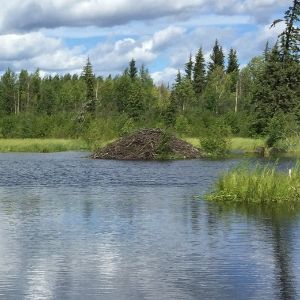 Alyssa Metro
Alyssa Metro
A beaver lodge is a dome-shaped home of sticks and mud with underwater entrances.
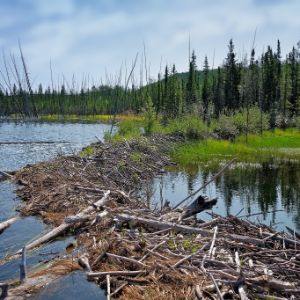 Mike Dam
Mike Dam
A beaver dam is a wall of sticks and mud built across water to create a pond.
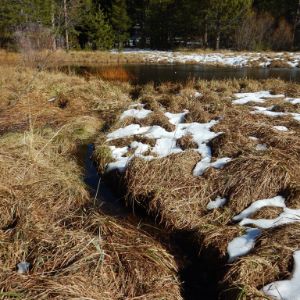 Jennifer Natali
Jennifer Natali
A beaver canal is a shallow waterway dug by beavers to transport resources and expand wetland area.
Research highlights
Research by Dr. Glynnis Hood and her team explored three key ways beavers influence wetland ecosystems in Alberta.
Click on a tab to explore research highlights
Wetland Hydrology
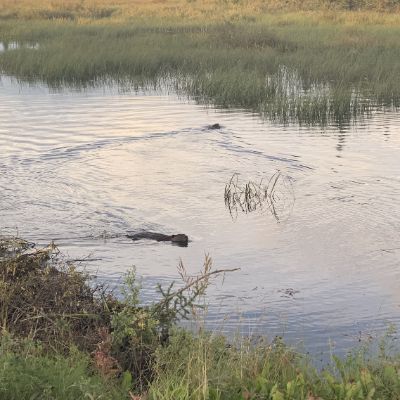 Jacqueline Williams
Jacqueline Williams
Beaver ponds store more water:
Beaver-inhabited ponds retained nine times more open water during severe droughts compared to non-beaver areas. The ponds were also generally deeper than those without beavers. This trend held true even in areas with isolated water bodies and limited stream flow, despite fluctuations in precipitation and temperature[1].
 Mike Dam
Mike Dam
Beaver dams slow water flow:
Beaver dams slow water flow, turning streams into ponds that allow more water to seep into the ground, boosting both soil moisture and underground water sources (i.e. groundwater), an important water source for drinking and farming, especially in drier areas[1,7].
Beaver activities reduce impacts of drought:
Beaver excavation of the bottom of the pond speeds up the recovery and refilling of the ponds after drought, helping maintain water levels that support aquatic life and create natural firebreaks that slow or stop wildfires[1,2]. An excavated bottom of a beaver pond (photo shown) can resemble a canyon-like landscape.
Wetland Biodiversity
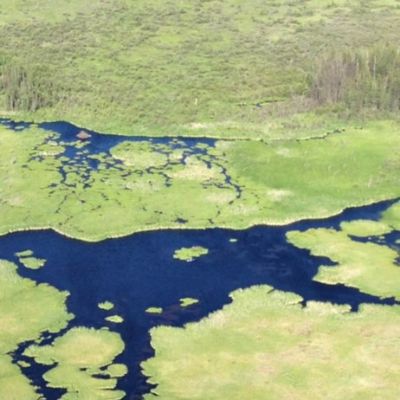 Nina Veselka
Nina Veselka
Beaver activities increase habitat diversity:
Beavers shape ponds by digging and building canals, which increase shoreline complexity and habitat diversity. On average, beavers can expand a pond’s shoreline by up to 575%[2]. This expanded environment creates more wetland ecological niches, supporting a greater variety of plants, invertebrates, and vertebrates, ultimately boosting wetland biodiversity.
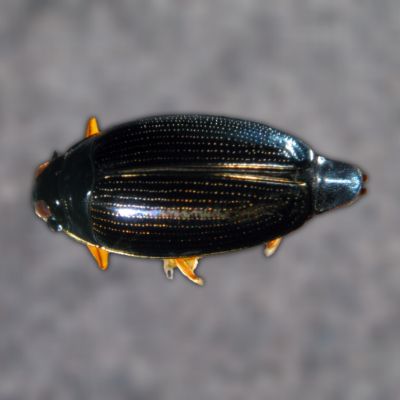 Hood Research Program
Hood Research Program
Beaver canals increase aquatic invertebrate diversity:
Beaver-modified wetlands, especially those with active canal systems and ongoing beaver activity, support diverse invertebrate communities. These habitats are hotspots for predatory aquatic invertebrates, such as Gerridae (water striders) and Gyrinidae (whirligig beetles- photo shown), which in one study were often found only in beaver ponds[6].
Beavers provide early access to open water:
Beavers provide earlier access to open water in spring for migrating waterfowl, particularly near active beaver lodges. The presence of the lodge and early access to water enables waterfowl to nest earlier, increasing their chances of reproductive success. Additionally, beaver lodges are preferred nesting sites for some waterfowl, such as Canada geese, providing protection from land predators[3]. The photo shows a Canada goose nesting on a beaver lodge with a beaver chewing ice to maintain open water nearby.
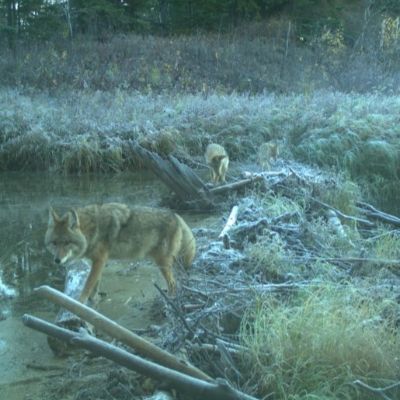 Glynnis Hood
Glynnis Hood
Beaver dams support animal movement:
Beaver dams support movement for at least 23 species of mammals and birds, including muskrats, coyotes (photo shown), moose, and white-tailed deer, which frequently use these structures to cross wetlands. These corridors foster interactions between species and help create biodiversity hotspots within wetlands[5].
Wetland Connectivity
 Jennifer Natali
Jennifer Natali
Beaver canals function as movement corridors:
Beavers build canals that can extend 200–300 meters from ponds[2]. These canals form networks that help beavers access foraging areas, offer refuge from predators, and facilitate the movement of other wildlife such as wood frogs, muskrats, water voles, and even fish in shallow waters. Beaver canals also serve as transport routes for building materials, allowing beavers to float branches and logs rather than carrying them over land.
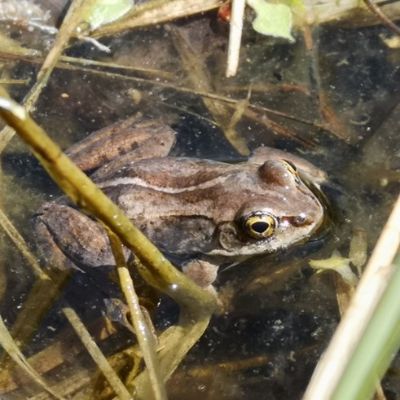 Alyssa M
Alyssa M
Wood frogs prefer beaver-made canals to disperse:
Young wood frogs (Lithobates sylvaticus) prefer beaver-made canals when dispersing from breeding ponds to upland habitats, a critical time when they are highly susceptible to dehydration. These canals may increase young frog survival and increase their chances of dispersal to other ponds, potentially enhancing genetic diversity and population resilience[8].
Conclusion
Beavers play a crucial role in shaping and maintaining Alberta’s wetlands.
- Their ability to alter landscapes enhances wetland hydrology by increasing water storage, stabilizing water levels, and reducing the effects of floods and droughts.
- They also boost biodiversity by expanding habitat variety, increasing shoreline complexity, and supporting a rich array of species from aquatic invertebrates to waterfowl and large mammals.
- Through dam-building and extensive canal networks, they support the movement of many species and link aquatic habitats.
Research by Dr. Glynnis Hood highlights these key effects, demonstrating how beaver-engineered ecosystems support rich biodiversity by providing habitat for a wide range of plants and animals. By modifying their surroundings, beavers create wetlands that are more resilient to environmental change, benefiting both ecosystems and human communities.
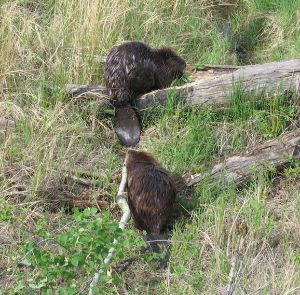 Glynnis Hood
Glynnis Hood
References
Hood, G.A., S.E. Bayley. 2008. Beaver (Castor canadensis) mitigate the effects of climate on the area of open water in boreal wetlands in western Canada. Biological Conservation 141(2): 556–67. Available at: https://www.sciencedirect.com/science/article/pii/S0006320707004557.
Hood, G.A., D.G. Larson. 2015. Ecological engineering and aquatic connectivity: A new perspective from beaver-modified wetlands. Freshwater Biology 60(1): 198–208. Available at: https://onlinelibrary.wiley.com/doi/abs/10.1111/fwb.12487.
Bromley, C.K., G.A. Hood. 2013. Beavers (Castor canadensis) facilitate early access by Canada geese (Branta canadensis) to nesting habitat and areas of open water in Canada’s boreal wetlands. Mammalian Biology 78(1): 73–77. Available at: https://doi.org/10.1016/j.mambio.2012.02.009.
Paine, R.T. 1969. A note on trophic complexity and community stability. The American Naturalist 103(929): 91–93. Available at: https://www.journals.uchicago.edu/doi/10.1086/282586.
Hood, G.A. 2024. Multi-method sampling increases detectability and assessment of spatio-temporal interactions of mammals and birds in wetland habitats. Freshwater Biology 69(8): 1157–73. Available at: https://onlinelibrary.wiley.com/doi/abs/10.1111/fwb.14304.
Hood, G.A., D.G. Larson. 2014. Beaver-created habitat heterogeneity influences aquatic invertebrate assemblages in boreal Canada. Wetlands 34(1): 19–29. Available at: https://doi.org/10.1007/s13157-013-0476-z.
Westbrook, C.J., D.J. Cooper, B.W. Baker. 2006. Beaver dams and overbank floods influence groundwater–surface water interactions of a Rocky Mountain riparian area. Water Resources Research 42(6). Available at: https://onlinelibrary.wiley.com/doi/abs/10.1029/2005WR004560.
Anderson, N.L., C.A. Paszkowski, G.A. Hood. 2015. Linking aquatic and terrestrial environments: Can beaver canals serve as movement corridors for pond-breeding amphibians? Animal Conservation 18(3): 287–94. Available at: https://onlinelibrary.wiley.com/doi/abs/10.1111/acv.12170.
Contributor
 John Ulan
John Ulan
Glynnis Hood, Professor Emerita at the University of Alberta, specializes in environmental science with a focus on wetland and wildlife ecology.
Her research highlights the ecological role of semi-aquatic mammals, particularly beavers, in shaping wetland ecosystems. Glynnis is also the author of The Beaver Manifesto, exploring human-wildlife interactions and conservation strategies. For more insights on beavers and their ecological impact, listen to Glynnis Hood’s episode, “Dam Proud: How the Beaver Has Shaped Canada’s Environment,” on Canadian Geographic’s Explore podcast.
If you have questions about her research, please get in touch: ghood@ualberta.ca



